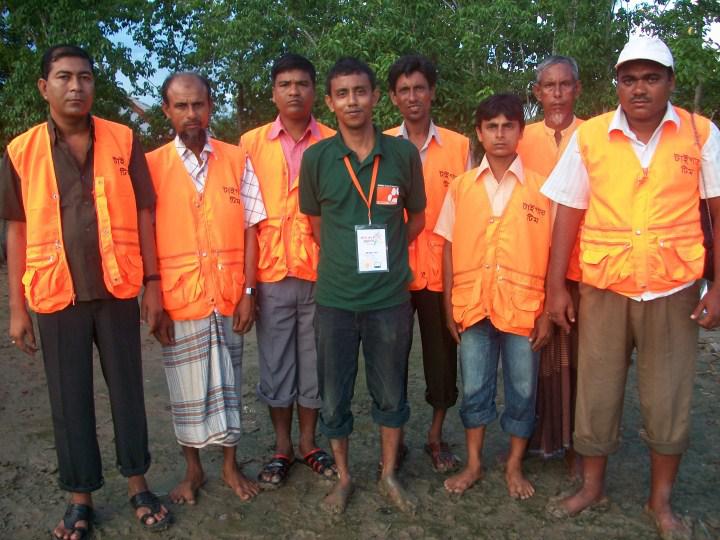Abu Saleh Mohammod Rejuan
The project aims are to understand the motivation of the community based volunteers that encouraged them to work voluntarily, as well as their management process so that we can develop a holistic volunteer management strategy for a human wildlife conflict zone.

Village Tiger Response Team members.
Conflict between human and tiger is a serious issue in the adjacent villages of Bangladesh Sundarbans. Each year about 50 people and 70 livestock are killed from tiger attack. To reduce human-tiger conflict in this area, the Government of Bangladesh in collaboration with WildTeam (a conservation NGO) develops community based volunteer teams, known as Village Tiger Response Team (VTRTs).
The aim of this initiative was to involve and train local people to reduce human-tiger conflict. This is one of the most successful community based initiatives in Bangladesh where some local people are united voluntarily to reduce human-tiger conflict. These people are risking their lives to control stray tiger situation in the villages, ultimately which saves the tigers, the villagers and their livestock. Even among the team members, some have lost their family members by tiger attacks. Moreover, they are doing this without any salary or financial incentives. Initially, 29 teams were formed covering 76 villages adjacent to the Sundarbans considering the most human-tiger conflict prone areas. Now about 350 members of 49 teams are volunteering around the Sundarbans. The aim of these teams is to act as an emergency responder during stray tiger situation to save the tiger and also the villagers and their livestock. There work includes emergency patrolling, stray tiger situation managing, retrieving dead body, transporting victims and providing emergency medical assistance.
For their significant role in human-tiger conflict management, local people have started relying on them for emergency assistance. Through their courage, motivation and hard labour, they have achieved their credibility in local community and are being respected as the safeguard of the forest.
My research will focus on the motivations of these volunteer teams, which will lead us to understand their management process and to find a way to make them sustainable so that we can use this model to mitigate human wildlife conflict in other human wildlife conflict zone.